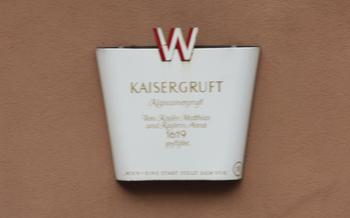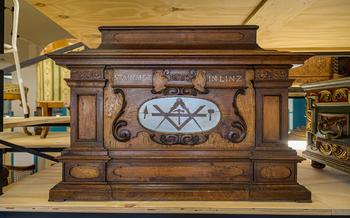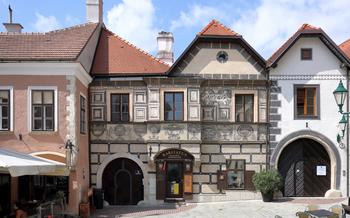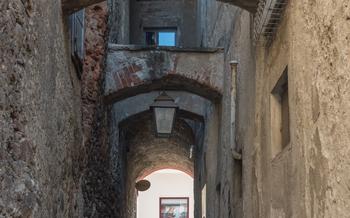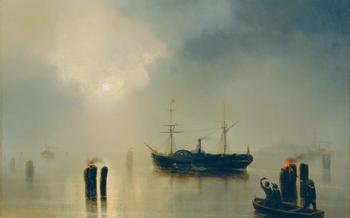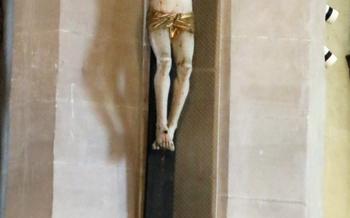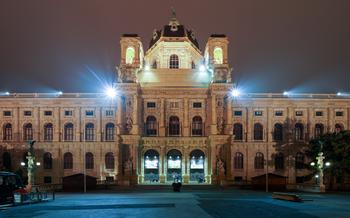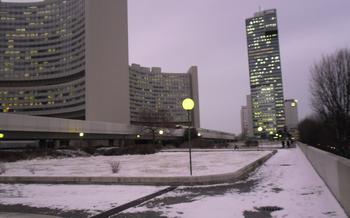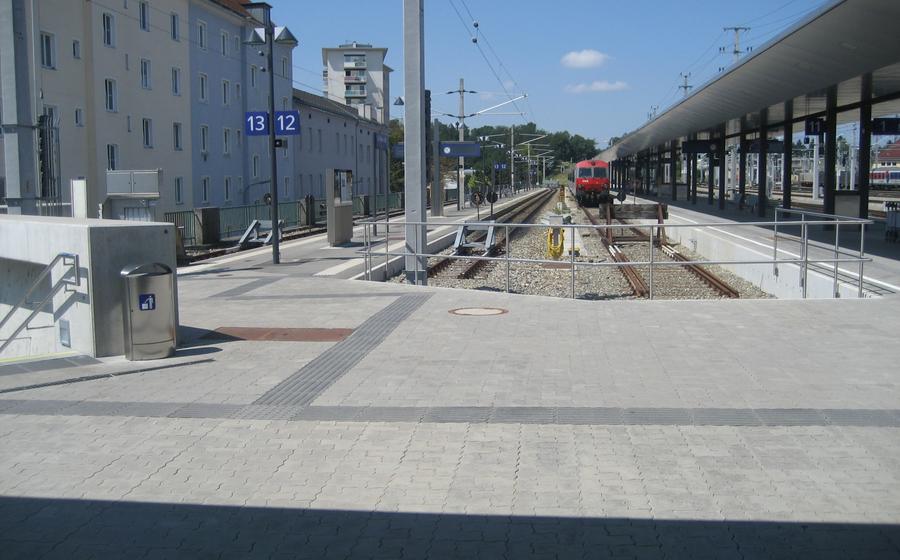
MAMUZ Museum Mistelbach
- A Journey Through Time at the MAMUZ Museum Mistelbach:
- Exploring the Origins of Humankind
- Unveiling the Secrets of the Bronze Age
- Discovering the Iron Age Legacy
- Celtic Culture and the Hallstatt Period
- Roman Herrschaft in Niederösterreich
- Medieval Marvels and Monastic Life
- The Renaissance and the Reformation
- Enlightenment Ideals and the Age of Revolution
- The 19th Century: Industrialization and Social Change
- The 20th Century: World Wars, Reconstruction, and Modernization
- Special Exhibitions and Temporary Displays
- Educational Programs and Workshops
- Accessibility and Visitor Information
- Insider Tip: Hidden Gems and Local Treasures
A Journey Through Time at the MAMUZ Museum Mistelbach:
Step into the captivating world of the MAMUZ Museum Mistelbach, where history comes alive through a journey of archaeological wonders and regional narratives. Nestled in the heart of Lower Austria, the museum invites you to discover a treasure trove of artifacts that tell the story of humankind's existence in this remarkable corner of the world.
The MAMUZ Museum Mistelbach is renowned for its exceptional collection, which spans various eras from the Stone Age to the 20th century. As you wander through its halls, you'll witness the evolution of human society, from humble beginnings to the complexities of modern life.
The museum's focus on archaeology and regional history shines through in its engaging exhibits. Interactive displays and hands-on activities bring the past to life, allowing you to touch, feel, and experience the artifacts firsthand. From crafting Stone Age tools to donning medieval armor, the MAMUZ Museum Mistelbach provides a truly immersive journey through time.
Intriguing anecdotes accompany the exhibits, sharing the stories behind significant archaeological discoveries and the challenges faced by researchers as they piece together the puzzle of our shared history. Immerse yourself in the fascinating world of the MAMUZ Museum Mistelbach and prepare to be captivated by the wonders of the past.
Exploring the Origins of Humankind
The MAMUZ Museum Mistelbach takes visitors on a captivating journey to the very beginnings of human history, delving into the evolution of our species and the lives of our early hominid ancestors. The museum's extensive collection of Stone Age artifacts, including tools, weapons, and jewelry, provides a glimpse into the ingenuity and adaptability of our prehistoric forebears.
One of the highlights of the Stone Age collection is a remarkable display of hand axes, crafted from flint with precision and skill. These tools, dating back hundreds of thousands of years, offer a tangible connection to the earliest hominids who roamed the earth. Visitors can marvel at the craftsmanship of these ancient tools and imagine the challenges faced by our ancestors as they adapted to their environment.
Another captivating exhibit showcases the museum's collection of animal bones, providing insights into the hunting practices and dietary habits of early humans. These bones, meticulously preserved and analyzed, tell the story of our ancestors' interactions with the animal kingdom and their dependence on hunting for survival.
To further enhance the visitor experience, the MAMUZ Museum Mistelbach features interactive displays that allow visitors to engage with ancient tools and artifacts in a hands-on manner. Visitors can try their hand at making stone tools, using replicas of prehistoric weapons, and even simulate the experience of hunting with ancient spears. These interactive elements bring the Stone Age to life and provide a deeper understanding of the challenges and triumphs of our early ancestors.
Studying human origins is not without its challenges. The fragmentary nature of the archaeological record and the vast timescales involved often leave researchers with more questions than answers. However, the MAMUZ Museum Mistelbach, through its collection and interactive exhibits, provides a valuable resource for scholars and enthusiasts alike, shedding light on the fascinating and complex story of human evolution.
Unveiling the Secrets of the Bronze Age
The MAMUZ Museum Mistelbach takes visitors on a journey through the Bronze Age, a transformative era marked by technological advancements, cultural innovations, and the rise of complex societies. The museum's collection of Bronze Age artifacts, spanning tools, weapons, and intricate jewelry, offers a glimpse into the daily lives and achievements of our prehistoric ancestors.
One of the highlights of the Bronze Age exhibit is the museum's reconstruction of a Bronze Age settlement. This life-sized replica of a typical Bronze Age village allows visitors to step back in time and experience firsthand the homes, workshops, and communal spaces of this ancient civilization. Interactive displays and hands-on activities further enhance the experience, inviting visitors to grind grain, craft pottery, and immerse themselves in the technologies and traditions of the Bronze Age.
Intriguingly, the Bronze Age was a time when metallurgy played a pivotal role in societal development. The ability to smelt and cast metals, particularly bronze, led to the creation of more durable and effective tools, weapons, and ornaments. This technological breakthrough revolutionized warfare, agriculture, and craftsmanship, contributing to the rise of powerful Bronze Age cultures across Europe and beyond.
A compelling anecdote from the Bronze Age collection highlights the challenges and rewards of studying ancient metallurgy. During excavations at a Bronze Age settlement, archaeologists discovered a cache of bronze tools and weapons that had been carefully buried in a pit. Upon further examination, they realized that these items had been intentionally damaged or broken before being buried, suggesting a ritual or symbolic significance. This discovery sparked a fascinating debate among scholars about the role of metallurgy in Bronze Age religious beliefs and practices.
Discovering the Iron Age Legacy
The MAMUZ Museum Mistelbach takes visitors on a journey through the Iron Age, a period of significant technological and cultural advancements. The museum's collection features an array of Iron Age artifacts, including tools, weapons, and pottery, providing insights into the daily lives and craftsmanship of ancient communities.
A highlight of the Iron Age exhibits is the museum's reconstruction of an Iron Age settlement. This immersive display allows visitors to step back in time and experience the living conditions and activities of Iron Age people. The settlement features replicas of houses, workshops, and storage facilities, providing a glimpse into the domestic and economic life of this ancient society.
Interactive displays and hands-on activities further enhance the visitor experience. Visitors can try their hand at grinding grain, weaving textiles, or forging iron using traditional techniques. These interactive elements make the museum a dynamic and engaging space for learning about Iron Age technologies and practices.
One of the most fascinating anecdotes related to the Iron Age collection is the story of the discovery of an Iron Age sword. During an archaeological excavation, a team of researchers unearthed a remarkably well-preserved sword buried alongside the remains of a warrior. The sword's intricate design and excellent craftsmanship suggest that it belonged to a high-ranking individual. This discovery highlights the importance of metalworking in Iron Age society and provides valuable insights into the status and symbolism associated with weapons during this period.
Celtic Culture and the Hallstatt Period
The MAMUZ Museum Mistelbach boasts an impressive collection of Celtic artifacts, offering visitors a glimpse into the rich cultural heritage of this ancient civilization. Highlights include intricate jewelry, finely crafted weapons, and beautifully decorated pottery. These artifacts showcase the artistic prowess and technological achievements of the Celts, who played a significant role in shaping the history and culture of Europe.
The museum's exhibits also shed light on the Hallstatt culture, a pivotal period in Celtic history. The Hallstatt culture flourished in the region during the Iron Age, leaving behind a legacy of impressive settlements, burials, and artifacts. Visitors can learn about the Hallstatt people's way of life, their beliefs, and their interactions with other cultures.
Interactive displays allow visitors to engage with Celtic traditions and beliefs in a hands-on way. They can try their hand at Celtic crafts, such as weaving and metalworking, and learn about the significance of Celtic symbols and rituals.
One of the most intriguing anecdotes associated with the Celtic collection is the story of the "Golden Hat of Schifferstadt." This exquisitely crafted hat, made of thin gold sheets, was discovered in a farmer's field in 195Its intricate decorations, depicting scenes of hunting, warfare, and mythology, offer a glimpse into the symbolic world of the Celts. The hat has become an iconic symbol of the MAMUZ Museum and a testament to the enduring legacy of Celtic culture.
Roman Herrschaft in Niederösterreich
The MAMUZ Museum Mistelbach offers a captivating glimpse into the era of Roman rule in Lower Austria, a period marked by significant developments and cultural interactions. The exhibits showcase a rich collection of artifacts, including coins, pottery, tools, and jewelry, providing insights into the daily lives and customs of the Roman inhabitants.
The museum's highlight is the reconstruction of a Roman villa, offering visitors a tangible experience of a typical Roman household. The villa features authentic furnishings, mosaics, and wall paintings, allowing visitors to immerse themselves in the grandeur and opulence of Roman life.
Interactive exhibits and hands-on activities engage visitors of all ages, enabling them to explore Roman technologies, try on replica armor, and even mint their own coins. Children can participate in educational workshops where they learn about Roman history, crafts, and games.
Anecdotes and stories bring the Roman era to life, highlighting the challenges and triumphs of Roman settlers as they established their presence in the region. Visitors can learn about the construction of roads and aqueducts, the introduction of new agricultural techniques, and the vibrant trade networks that connected Roman Lower Austria with the vast empire.
Medieval Marvels and Monastic Life
The MAMUZ Museum Mistelbach takes you on a journey through the intriguing world of medieval Europe. Discover a treasure trove of artifacts that illuminate the lives of monks and nuns, as well as the broader society they served. Medieval manuscripts, adorned with intricate calligraphy and vibrant illuminations, offer a glimpse into the intellectual and spiritual pursuits of the time.
Explore the significance of monasteries as centers of learning, spirituality, and community. These institutions played a crucial role in preserving knowledge, fostering religious devotion, and providing social welfare. Immerse yourself in the daily lives of monks and nuns as you learn about their rituals, traditions, and contributions to medieval society.
Interactive exhibits invite you to engage with medieval crafts and technologies. Try your hand at calligraphy, experience the art of bookbinding, or marvel at the ingenuity of medieval engineering. Step into a replica of a medieval scriptorium and witness the painstaking process of creating illuminated manuscripts.
Don't miss the captivating anecdotes that bring the medieval world to life. Hear tales of wandering monks who spread knowledge and faith, the construction of majestic cathedrals that symbolized both power and devotion, and the lives of ordinary people who shaped the fabric of medieval society.
The Renaissance and the Reformation
The MAMUZ Museum Mistelbach also delves into the transformative periods of the Renaissance and Reformation. During this time, humanism, art, and religious change took center stage, reshaping society and culture. The museum's exhibits showcase the artistic brilliance of the Renaissance, with paintings, sculptures, and decorative arts that reflect the revival of classical ideals and the celebration of the human form. Visitors can admire works by renowned masters such as Albrecht Dürer and Lucas Cranach the Elder, whose paintings capture the essence of this era.
The Reformation, a religious movement that challenged the authority of the Catholic Church, is also explored in the museum's displays. Visitors can learn about the key figures of the Reformation, such as Martin Luther and John Calvin, and their revolutionary ideas that sparked religious and political upheaval across Europe. The museum presents artifacts related to the Reformation, including bibles, pamphlets, and religious objects, shedding light on the profound impact of this movement on society and the development of Protestantism.
Anecdote:
One of the most intriguing artifacts on display at the MAMUZ Museum Mistelbach is a rare first edition of Martin Luther's Ninety-Five Theses, printed in 151This revolutionary document, which Luther famously nailed to the door of the Wittenberg church, sparked the Protestant Reformation and challenged the authority of the Catholic Church. Visitors can marvel at this historical document and contemplate its far-reaching impact on the course of Western history.
Enlightenment Ideals and the Age of Revolution
The MAMUZ Museum Mistelbach offers a thought-provoking journey through the Enlightenment and the Age of Revolution, two transformative periods that shaped the modern world. Discover the intellectual ferment of the Enlightenment, where scientific progress, critical thinking, and humanism challenged traditional beliefs and ushered in a new era of reason and rationality. Explore the impact of the American and French Revolutions, which ignited the flames of liberty and equality, transforming political landscapes and societies. Engage with interactive exhibits that bring to life the ideas and innovations of this tumultuous time, from the writings of Voltaire and Rousseau to the storming of the Bastille.
Anecdote: During the Age of Revolution, a young woman named Olympe de Gouges defied societal norms and penned the Declaration of the Rights of Woman and the Female Citizen, boldly advocating for women's rights and equality. Her courage and determination serve as a reminder of the transformative power of revolutionary ideals.
The 19th Century: Industrialization and Social Change
The 19th century was a period of transformative change in Austria, marked by industrialization, urbanization, and the rise of the middle class. The MAMUZ Museum Mistelbach's exhibits on this era showcase the technological advancements, social upheavals, and cultural shifts that shaped Austrian society during this time.
Visitors can explore interactive displays that recreate the bustling atmosphere of 19th-century factories, where machines revolutionized production and transformed the lives of workers. The museum also highlights the rise of urban centers, with exhibits on the growth of cities like Vienna and the challenges faced by urban populations.
One of the most significant developments of the 19th century was the emergence of the middle class. The museum's collection includes artifacts that reflect the changing lifestyles and aspirations of this growing social group, from elegant furniture and fashionable clothing to domestic objects that demonstrate the increasing comfort and convenience of middle-class life.
The 19th century was also a time of significant social and political change, as the Austrian Empire grappled with revolutionary movements and the struggle for national identity. The museum's exhibits explore these complex issues, providing insights into the challenges and triumphs of this tumultuous era.
The 20th Century: World Wars, Reconstruction, and Modernization
The 20th century was a tumultuous time for Austria, marked by world wars, reconstruction, and modernization. The MAMUZ Museum Mistelbach's exhibits on this period explore the challenges and triumphs of this transformative era. Visitors can learn about the political upheaval, economic recovery, and technological advancements that shaped Austrian society during this time.
The museum's collection includes artifacts from both World Wars, including uniforms, weapons, and propaganda materials. These exhibits shed light on the devastating impact of war on the region and the resilience of the Austrian people in the face of adversity. Visitors can also learn about the challenges of reconstruction after the war and the country's eventual return to prosperity.
The MAMUZ Museum Mistelbach also highlights the cultural and social changes that took place in Austria during the 20th century. Visitors can explore exhibits on the rise of mass media, the changing role of women in society, and the impact of globalization. The museum's interactive displays allow visitors to experience the sights and sounds of 20th-century Austria, from the bustling streets of Vienna to the tranquil countryside.
One of the most poignant exhibits in the museum is a collection of letters written by Austrian soldiers during World War I. These letters offer a glimpse into the personal experiences of those who fought on the front lines and the hardships they endured. Visitors can also learn about the role of women in the war effort, as they filled essential roles in factories and hospitals while the men were away.
The MAMUZ Museum Mistelbach's exhibits on the 20th century provide a comprehensive overview of this tumultuous period in Austrian history. Visitors can gain a deeper understanding of the challenges and triumphs faced by the Austrian people and appreciate the resilience and determination that helped them rebuild their country after war and adversity.
Special Exhibitions and Temporary Displays
The MAMUZ Museum Mistelbach offers a diverse program of special exhibitions and temporary displays that complement its permanent collection. These exhibitions showcase a wide range of topics, from ancient civilizations and historical events to contemporary art and innovative technologies.
One of the most popular special exhibitions was "The World of the Pharaohs," which featured artifacts from ancient Egyptian tombs and provided insights into the lives and customs of the pharaohs and their subjects. Another notable exhibition was "The Vikings: Raiders, Traders, Explorers," which explored the history and culture of the Vikings, showcasing their seafaring skills, trading networks, and artistic achievements.
Temporary displays at the MAMUZ Museum Mistelbach often focus on current archaeological discoveries and research projects. For example, a recent display showcased the results of excavations at a Bronze Age settlement in Lower Austria, providing visitors with a glimpse into the lives of the people who inhabited the region thousands of years ago.
These special exhibitions and temporary displays offer visitors the opportunity to engage with new and innovative ideas and perspectives, and to learn about a wide range of topics beyond the museum's permanent collection. They also contribute to the museum's mission of promoting cultural understanding and appreciation for history and heritage.
Educational Programs and Workshops
The MAMUZ Museum Mistelbach offers a diverse range of educational programs and workshops designed to engage visitors of all ages and interests. Children can embark on exciting archaeological adventures through interactive workshops, where they uncover ancient artifacts, learn about the lives of early humans, and create their own prehistoric art. Families can participate in themed activities that foster teamwork and creativity, such as building a Bronze Age settlement or crafting medieval pottery. Adults can delve deeper into specific historical periods or topics through lectures, seminars, and guided tours led by museum experts.
One of the most popular educational programs is the "Time Travel Adventure," where participants dress in period costumes and immerse themselves in a particular historical era. They engage in hands-on activities, solve puzzles, and interact with museum staff dressed as historical characters. This immersive experience brings history to life and creates lasting memories for visitors of all ages.
The museum also hosts regular workshops on topics such as archaeology, art history, and museum studies. These workshops provide participants with the opportunity to learn new skills, engage with museum professionals, and gain a deeper understanding of the museum's collection and research.
Whether you're a family looking for a fun and educational day out, a student seeking to expand your knowledge, or an adult with a passion for history, the MAMUZ Museum Mistelbach's educational programs and workshops offer something for everyone.
Accessibility and Visitor Information
The MAMUZ Museum Mistelbach is committed to providing an accessible and welcoming environment for all visitors. The museum features wheelchair ramps, elevators, and accessible restrooms, ensuring that everyone can comfortably explore the exhibits. Additionally, sign language tours are available upon request, allowing visitors with hearing impairments to fully engage with the museum's collections and stories.
At the museum's visitor center, friendly and knowledgeable staff is ready to assist visitors with any questions or inquiries. Here, you can purchase tickets, obtain maps and guides in various languages, and receive personalized recommendations for your visit. The museum's website and social media channels provide up-to-date information on exhibitions, events, and educational programs, allowing visitors to plan their visit in advance.
For further assistance or to book a sign language tour, visitors can contact the museum directly using the following details:
- Address: MAMUZ Museum Mistelbach, Museumstraße 1, 2130 Mistelbach, Austria
- Phone: +43 2572 20719
- Email: [email protected]
- Website: www.mamuz.at
Whether you're a history buff, an art enthusiast, or simply looking for a fun and educational day out, the MAMUZ Museum Mistelbach promises a memorable and enriching experience for visitors of all ages and abilities.
Insider Tip: Hidden Gems and Local Treasures
Beyond the walls of the MAMUZ Museum Mistelbach, a wealth of hidden gems and local treasures await the curious traveler. Just a short stroll from the museum, visitors can uncover the charm of Mistelbach's historic old town, with its picturesque cobblestone streets, colorful facades, and inviting cafes. Take time to savor the town's unique atmosphere as you wander past charming boutiques, art galleries, and traditional restaurants.
For a taste of local cuisine, head to one of the many Gasthäuser or Heurige, where you can indulge in hearty Austrian dishes and sample the region's renowned wines. Be sure to try the Weinviertel DAC, a crisp and fruity white wine produced exclusively in the region.
If you're looking for more cultural experiences, visit the nearby Museum of Modern Art, which showcases a diverse collection of contemporary art from around the world. Alternatively, immerse yourself in the region's rich history at the Mistelbach Castle, a magnificent Renaissance palace that now houses a museum dedicated to local history and culture.
Nature enthusiasts will find plenty to explore in the surrounding Weinviertel region. Take a leisurely hike through the rolling vineyards, cycle along the scenic wine routes, or discover the hidden gems of the Thaya Valley National Park. Whether you're seeking tranquility or adventure, the Weinviertel offers a diverse range of outdoor experiences.
To make the most of your visit, consider joining a guided tour of the MAMUZ Museum Mistelbach. Knowledgeable guides will lead you through the museum's exhibits, sharing fascinating insights into the region's rich history and culture. Guided tours are available in various languages and can be tailored to your specific interests.
With its captivating exhibits, hidden gems, and local treasures, the MAMUZ Museum Mistelbach and its surroundings offer a truly unforgettable experience for travelers seeking a deeper connection with the region's past and present.

